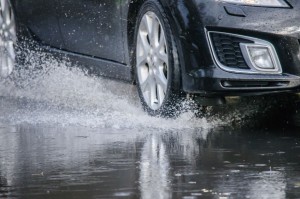Civil engineering is defined as an engineer who “designs and maintains roads, bridges, dams, and similar structures,” but the job requirements and responsibilities are far more complex. Our civil engineering team regularly provides site engineering and design services for both public and private projects, a process which includes designing and implementing drainage plans and water detention systems.
Designing water systems might seem like an afterthought, but in reality, it’s critical that the civil engineering team considers this aspect of a project before getting to work. This process varies from project to project but generally includes drainage analysis, stormwater detention system design, and even sewer system designs. Let’s break things down a bit further:
Civil engineering and drainage analysis
A civil engineering team has to consider every aspect of the building process. In addition to the integrity of the structure itself, engineers also need to think about a piece of land’s ability to manage water flow in the event of a major storm or flooding. Even ancient builders realized this. In fact, according to RoadEx.org, the first roads appeared some 3500 years ago, and even these early predecessors to the modern highway took drainage into account.
Water might be the planet’s life force, but it can cause plenty of problems if allowed to sit on sidewalks or roadways. Without proper drainage analysis, a structure runs the risk of flooding, foundational damage, and in worst-case scenarios erosion and even sinkholes.
Stormwater detention system analysis and design
Utah is the nation’s second dryest state, but it still averages 13 inches of annual precipitation. Winter snow storms and spring showers can quickly appear and leave inches and sometimes feet of moisture in their wake. Because Mother Nature is unpredictable, it’s critical that all structures (and their accompanying parking areas) are prepared to handle stormwater runoff.
 When starting work on a drainage project, our civil engineering team considers things like:
When starting work on a drainage project, our civil engineering team considers things like:
- The altitude at which we’re building
- The lay of the land (ie: hills, gullies, flat land, etc.)
- Local vegetation
- Population size
- Traffic patterns
Based on the information that is gathered, we are then able to design an effective stormwater detention system that meets a site’s specific needs.
How does poor drainage impact paving?
Standing water probably doesn’t seem like a big deal, right? Even with adequate drainage systems, snow melt-off and heavy rainstorms often leave large puddles of water on the side of the road. While water does collect in stormy scenarios, adequate drainage design can:
- Keep clients and employees safe – When water is left to stand, employees, run the risk of hydroplaning or slipping on patches of frozen ice. Standing water can also impact the tread on tires, leading to accidents or spinouts.
- Prevent erosion – standing water seeps into the cracks and pours of concrete and asphalt, expanding the substance and leading to cracks and potholes.
- Prevent warping – Asphalt absorbs a percentage of stormwater which can lead to bubbles or deformations. Over time, this impacts the integrity of roads and driveways.
Don’t forget about sanitary sewer system design
If the threat of warped and damaged driveways and parking areas doesn’t convince you of the importance of drain system design, consider your businesses’ sewage needs. Everyone has to use the restroom, and inevitably your commercial building needs a way to handle this without broken pipes or septic issues.
Our civil engineering team can assist you in designing an adequate and sanitary sewer system that will ensure your building stays smell and toxin-free while providing you with adequate and eco-friendly wastewater management.
We’ll be happy to assist you with drainage analysis
For over 30-years our civil engineering team has helped customers with everything from small residential projects to regional shopping centers. Our experience includes retail, office, restaurant, industrial and residential projects.
If you’re looking to start work on a new project, contact the team here at McNeil Engineering. We’ll ensure your drainage system is top of the line! http://mcneilengineering.com








